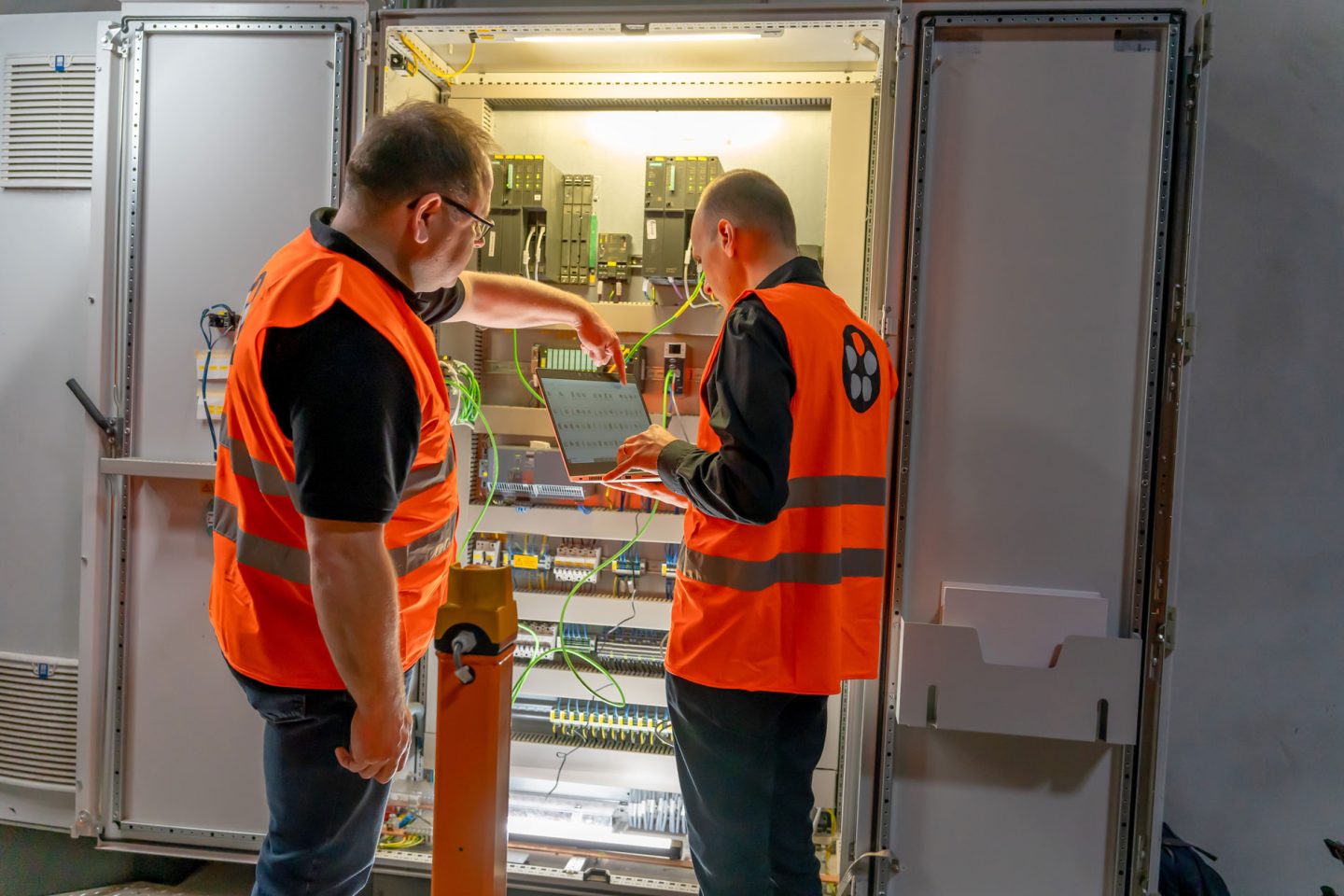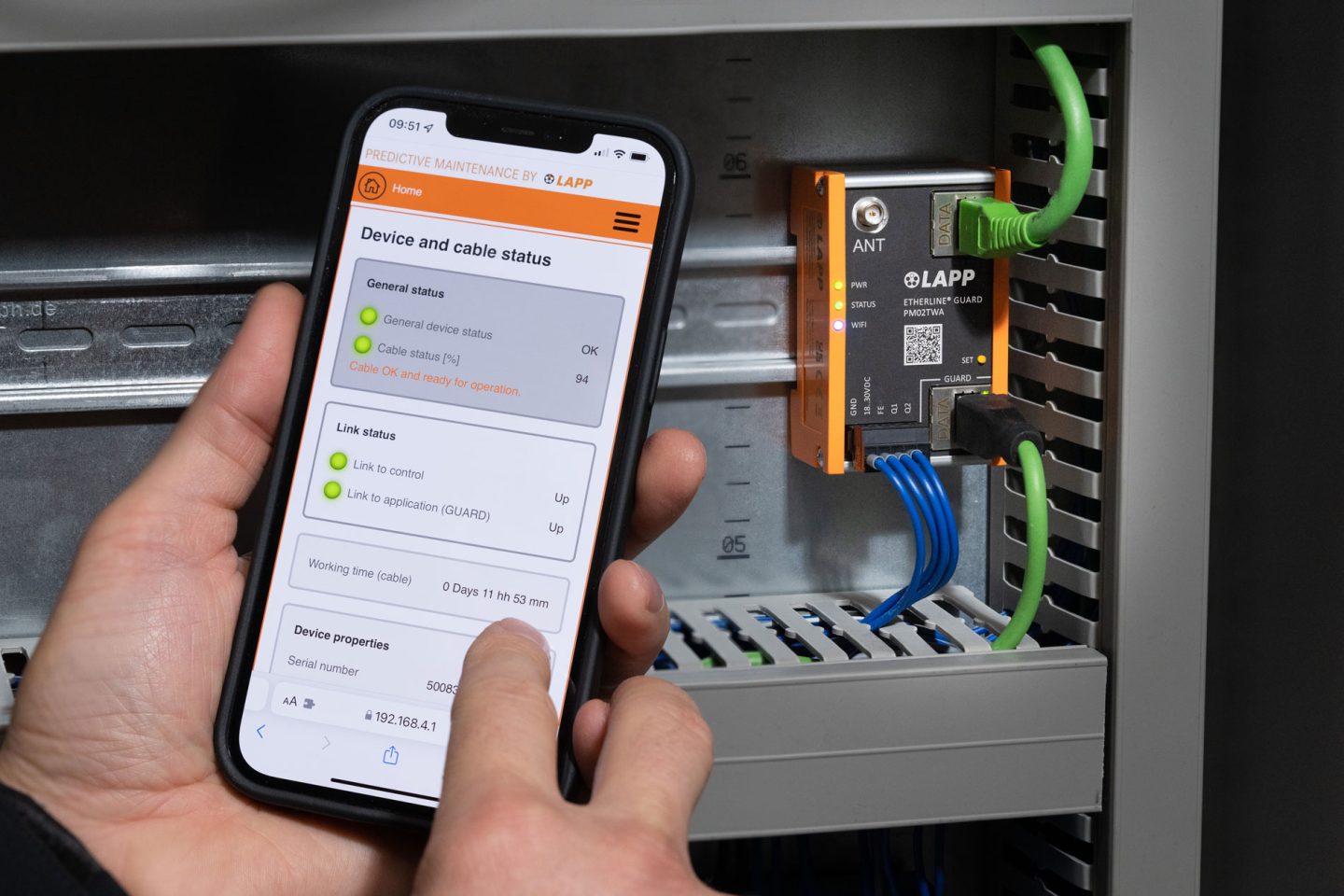
Gartner released its annual strategic technology trends for 2022. What immediately stands out is this: Data is the new oil of our time. In addition to cyber security, provision of data in the data factory and cloud solutions, targeted and valid decision-making is more than ever on the agenda: decision intelligence. In today’s world, this is more important than ever in order to protect one’s own company as far as possible from possible crises, such as pandemics, wars and shortages. According to Gartner, three factors are important within this trend in order to make informed decisions: Interconnectedness, Contextualization and Continuity. “It is precisely these three factors that are also needed in mechanical and plant engineering – after all, it is more quickly dependent on external influences and, if necessary, a decision must be made at lightning speed,” knows Jürgen Greger from LAPP. He alludes to the fact that wrong or missing decisions can cost companies dearly: “If the machine spontaneously breaks down and it comes to a standstill, I can only act reactively and every minute I spend troubleshooting costs me a price in the multi-digit range – depending on the industry.” LAPP, the world leader in integrated connectivity technology, recognizes that to be a strategic advisor, the company must engage with customers’ machine planning and maintain an all-around view of their networks – keeping customers from being reactive and paving the way for better long-term decisions.
Networked systems require networked decisions
The end-to-end networked and automated factory has already made its way into industry. However, this poses stumbling blocks for productions, because sources of error can be located practically anywhere. However, it makes neither sense nor is it economical to monitor the condition of every single piece of equipment in a production facility, and this also applies to cables. Plant managers therefore rightly wonder which devices they should check first – and often make the wrong decision. Most often, they purchase predictive maintenance for the devices that are most expensive, such as drives. But the Vortex Report 2021 shows that more than half of machine failures are due to connectivity errors. Cables and connectors – components where budgets are readily cut – thus cause the greatest damage because they can paralyze an entire production line. Accordingly, it’s not price that should determine what should be monitored, but the likelihood of failure and the importance of a component. “When it comes to connectivity, special attention should be paid to cables that are moved, such as in drag chains,” explains Jürgen Greger, who was involved in the product development of the ETHERLINE® GUARD. This device is looped into an Ethernet line and monitors the drop in transmission parameters, thus providing decision-makers with information on when replacement is advisable in this specific application. “Networked production environments are about making equally networked decisions – only when data from all areas is collected, organized and analyzed in terms of its priority in the plant can a good decision be made from the big picture.”


Contextuality: the art of asking the right questions
Keyword Big Picture: Decisions that may be the right ones for the moment in one area may take unpredictable influence on another area that is equally important. So it’s all the more essential that decision makers can ask the right questions to get the big picture. “It is not reasonable to expect every detail and every connection in the plant to be overlooked in its entirety by one person at all times – so this is where data sharing on a grand scale and automation come into play,” Dr. Patrick Olivan knows. LAPP has launched the Health Check service for this purpose within its FutureLabs, a research and innovation format for identifying and developing new services and products. The reason, according to Dr. Patrick Olivan, who was instrumental in developing the service, is a simple one: “Our customers specialize in your day-to-day business and your industry – why should you also be concerned with optimizing their connectivity? Our Health Check service combines our knowledge from over 60 years and can start right here.” The service is performed by LAPP experts. It can be an acceptance or a precautionary check for machines and networks, from the study of the network typology to the analysis of the data packets and electromagnetic compatibility to the verification of the real-time stability of the network. Production maintenance or machine manufacturers thus receive a complete overview in the final acceptance report, including suggestions for improvements in the design and planning of their machine networks. Machine manufacturers in particular have an interest in being able to prove to their customers that the entire machine network has been planned, installed and is operational in a secure and robust manner, thus ensuring highly available operation of the machines. Machine manufacturers can thus offer their own customers an additional level of security, since their machine network has been certified by LAPP. “Of course, you can do this yourself if your own employees have the relevant knowledge, – but experience shows us that, especially in times of a shortage of skilled workers, hardly anyone has the time,” says the expert in machine network health.
Continuous data exchange as the basis for decision making
“Without data exchange, it is almost impossible to make informed and good decisions in our networked world,” the two LAPP experts agree. However, some are hesitant because they don’t want to share their production data, even with long-standing trusted partners like LAPP. Yet it is smart systems and services for data collection and processing, such as ETHERLINE® GUARD or the Health Check Service, that first prepare the groundwork for good decisions. Concerns about data protection are unfounded, because instead of absolute values, ETHERLINE® GUARD, for example, only collects relative changes in line status. The competition would not be able to do anything with this. Another reason why decisions in the production environment are subject to continuity is the maturity of predictive maintenance – there is no technology that can predict to the day when a line or component will fail. Networked mechanical and plant engineering is subject to too many external influences and interactions for that. Predictive mainenance also means not only obtaining a condition diagram, but combining different information with each other to ultimately be able to carry out the maintenance case quickly and easily. In the case of ETHERLINE® GUARD, this means that in the future, ordering and delivery of spare parts can be triggered with foresight. Especially in the current times, this has the advantage that availability, delivery times and production bottlenecks become obsolete. Too often, a spare part is needed that cannot be delivered quickly enough or is stored in stockpiles – neither of which is economical.

Services like LAPP’s are just the beginning, with more to come. In the future, they could be combined with services from other technology providers into a predictive maintenance dashboard that monitors the health of an entire factory. That would take informed decision making to an entirely new level. Maintenance windows can be planned more intelligently and downtime reduced, and it also allows for greater efficiency and maximum quality in production. Until then, decision-makers in the production environment would be well advised to prioritize their machinery and equipment in terms of importance and susceptibility to failure, implement smart services and products for monitoring – and continuously analyze which factors may have changed and require optimization. Meanwhile, LAPP is gathering numerous insights into entire plants, processes and production planning in a wide variety of industries – the two LAPP engineers are certain: “There are many learnings here for us as connectivity professionals – surely one or the other new innovation in our portfolio will emerge from this, helping customers to make the best possible decision”.
